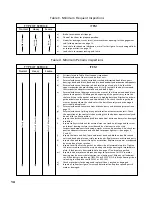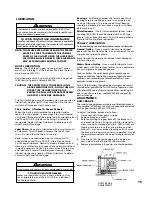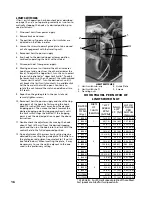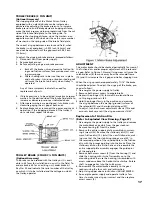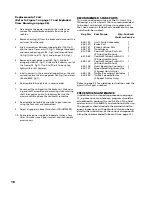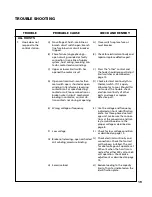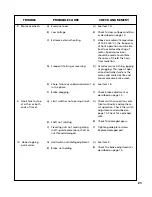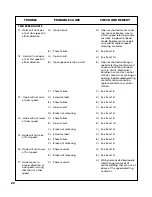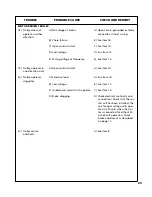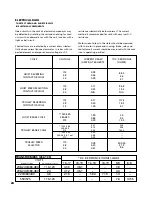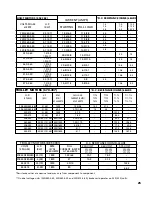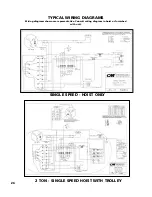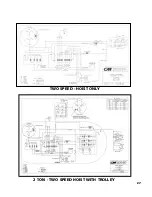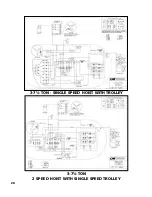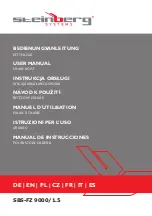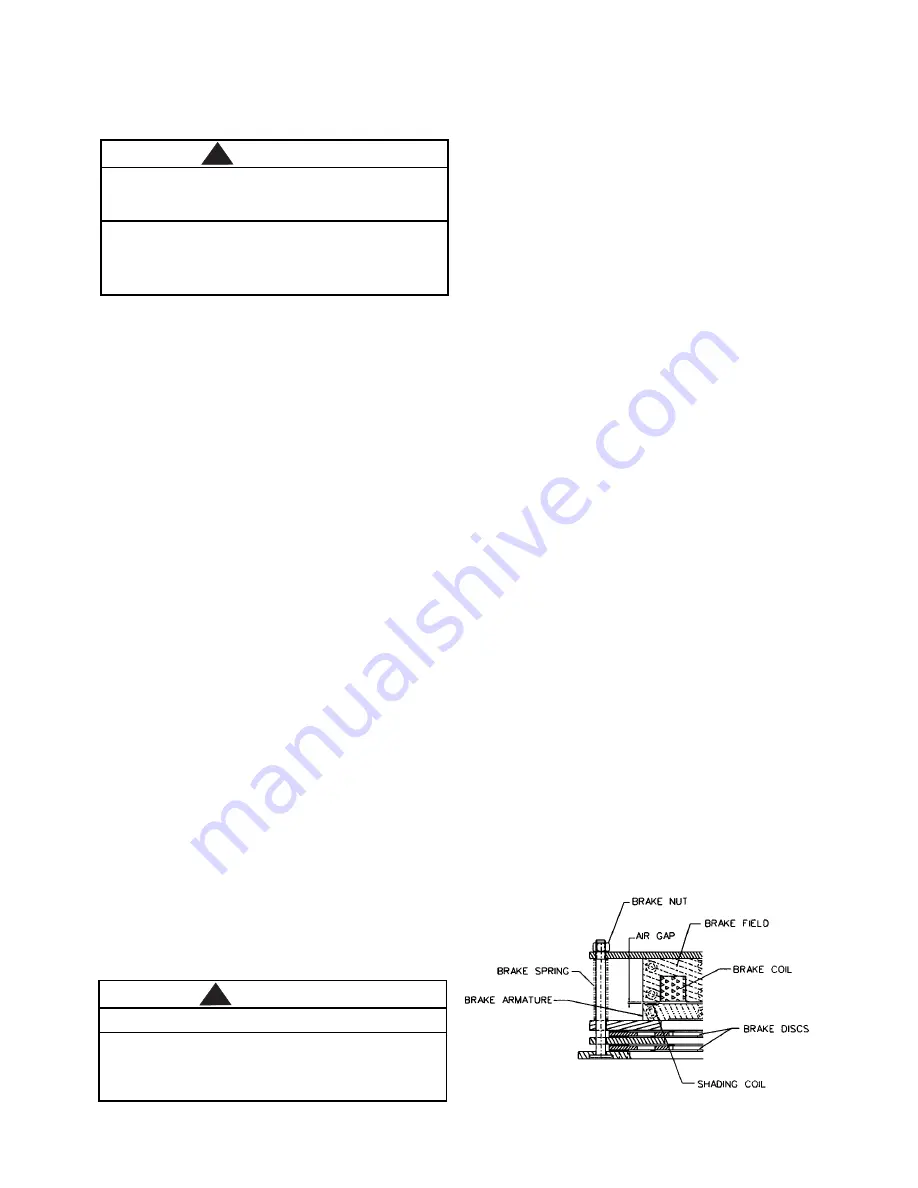
15
LUBRICATION
NOTE: TO ASSURE EXTRA LONG LIFE AND TOP PERFOR-
MANCE, BE SURE TO LUBRICATE THE VARIOUS
PARTS OF THE XL HOIST USING THE LUBRICANTS
SPECIFIED BELOW. IF DESIRED, THESE LUBRCANTS
MAY BE PURCHASED FROM THE FACTORY.
HOIST LUBRICATION
Gears.
Check oil level in gear housing at least once a
month, maintaining it at the bottom of oil level hole in
main housing (652-110).
Drain housing every 2-3 years and refill with one gallon
(3.86 liters) of gear oil Amoco 85W-140.
CAUTION: THE PROTECTOR IS TO OPERATE IN THE
ABOVE MENTIONED OIL. DO NOT USE ANY
OTHER TYPE OF LUBRICANT OR THE
PROTECTOR WILL NOT OPERATE PROPERLY
AND PARTS COULD BE DAMAGED.
The limit switch gears are of molded nylon and require no
lubrication. Apply a light film of machine oil to the limit
switch shaft threads at least once a year.
Chain Guides, Liftwheel & Sheave Wheels.
When the hoist is disassembled for inspection and/or
repair, the chain guides, sheave wheels (on multi-reeved
units) and liftwheel must be lubricated with Lubriplate Bar
and Chain Oil 10-R (Fiske Bros. Refining Co.) prior to
reassembly. Apply sufficient lubricant to obtain natural
runoff and full coverage.
Load Chain.
Keep chain lubricated with a small amount
of lubricant. This will greatly increase the life of load
chain. Do not allow the chain to run dry.
Keep it clean and lubricate at regular intervals with
Lubriplate Bar and Chain Oil 10-R (Fiske Bros. Refining
Co.) or equal lubricant. Normally, weekly lubrication and
cleaning is satisfactory, but under hot and dirty conditions,
it may be necessary to clean the chain at least once a day
and lubricate it several times between cleanings. When
lubricating the chain, apply sufficient lubricant to obtain
natural runoff and full coverage.
WARNING
The lubricants used in and recommended for the XL Hoist
may contain hazardous materials that mandate specific han-
dling and disposal procedures.
TO AVOID CONTACT AND CONTAMINATION:
Handle and dispose of lubricants only as directed in applicable
material safety data sheets and in accordance with applicable
local, state and federal regulations.
!
WARNING
Used motor oils contain known carcinogenic materials.
TO AVOID HEALTH PROBLEMS:
Never use used motor oils as a chain lubricant. Only
use Lubriplate Bar and Chain Oil 10-R as a lubricant
for the load chain.
!
Bearings.
All bearings except the lower hook thrust
bearings are pre-lubricated or are in an oil bath and
need no lubrication. The lower hook thrust bearing
should be lubricated at least once a month with heavy
duty machine oil.
Miscellaneous.
If unit is disassembled, splines inside
coupling (652-103) should be coated with an EP type
grease (such as Evans Products Co. Anti-Scoring Extreme
Pressure Lub. No. 3) before reassembly.
TROLLEY LUBRICATION
Trackwheel bearings are pre-lubricated and require no lubrication.
Geared Trolley.
Once a month lubricate trackwheel
gears with Texaco Novatex No. 2 or an equivalent heavy
cup grease or graphite grease.
Every six months lubricate handwheel shaft bearings in
3-in-1 machine oil.
Motor Driven Trolley.
Once a month lubricate track-
wheel gears with Texaco Novatex No. 2 or an equivalent
heavy cup grease or graphite grease.
For 2 ton trolleys, the motor bearings and reduction gears
require no additional lubrication. However, if gears are disas-
sembled, upon reassembly use Texaco Novatex No. 1 or an
equivalent medium cup grease.
For 3-7 1/2 ton trolleys, the right angle worm gear reducer oil
should be changed after the first 100 hours of operation, then
after every 2500 hours of normal service. When replacing oil
due to repairs or service, use Mobil SHC-626 or equal, for
each oil change.
ADJUSTMENTS
HOIST BRAKE
The correct air gap between armature and field when brake is
not energized, is 0.025 inch (.63 mm) and need not be adjusted
until the gap reaches 0.045 inch (1.14 mm).
To adjust the brake, proceed as follows:
1.
Disconnect hoist from power supply.
2.
Remove brake end cover.
3.
Before adjusting the gap, back off the brake nuts
and examine friction linings and friction surfaces for
wear, scoring or warpage (min.thk. .188). Also check
shading coils to be sure they are in place and not
broken. A missing or broken shading coil will cause
the brake to be noisy when hoist is operated. Any of
these symptoms indicate the need for replacement of
parts.
4.
Turn brake nuts clockwise gaging the air gap on
each side and at both ends of the armature.
5.
Replace cover, reconnect the power and check operation.
HOIST BRAKE
ADJUSTMENT














